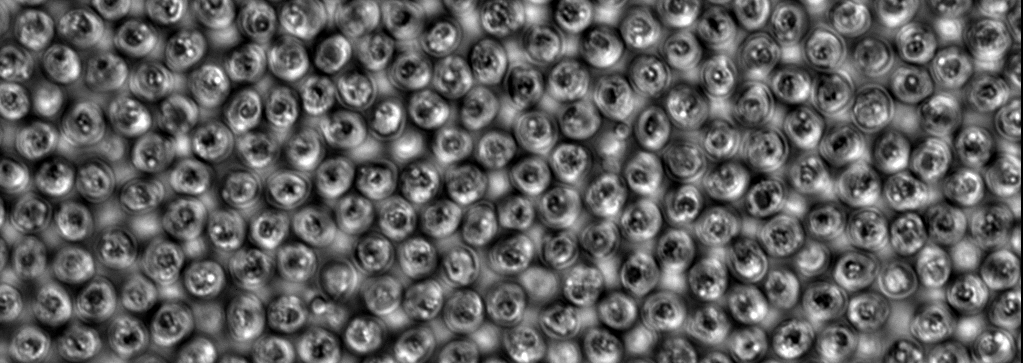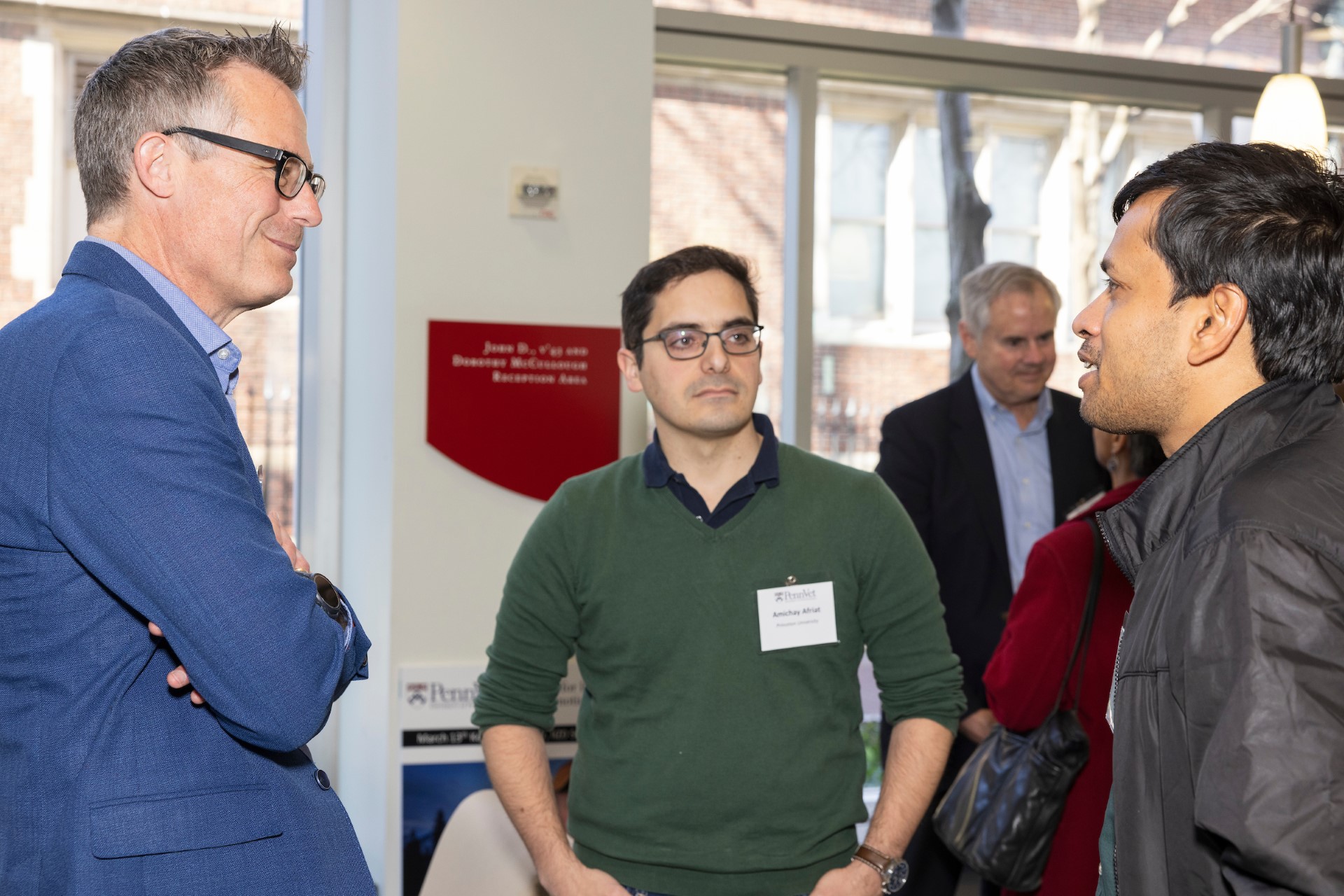
Due to the many technical difficulties studying Cryptosporidium, scientists have struggled for many years to advance research on the single-celled parasite that is one of the leading causes of deadly diarrheal disease. Multiple breakthroughs in the past decade, says biologist Boris Striepen of the School of Veterinary Medicine, have made this a tractable pathogen and disease.
With support from the Bill & Melinda Gates Foundation and the National Institutes of Health, the Striepen Lab and others have pursued an ambitious research agenda. Genetic engineering of the parasite, along with new culture and animal models, enabled progress toward drugs and vaccines. For the first time in many years, new candidate drugs have now entered human trials.
Striepen and Christopher Hunter, also of Penn Vet, sought to amplify these advances by organizing the First Biennial Cryptosporidium Meeting, held at Penn. It included academic researchers from across disciplines, scientists from leading pharmaceutical companies, representatives of United States and international public health agencies, and leading clinicians from some of most impacted countries, including Zambia, Kenya, Colombia, Bangladesh, and India.
“There had been transformational progress, and we thought this a great opportunity to bring everybody together to ask. Now that we have the tools to address this problem, where is the field and what should we do next?” Striepen says.
He stresses the gravity of cryptosporidiosis—the disease caused by the parasite—and the importance of finding drugs and vaccines. The conference spanned the field, from the fundamental biology of the life cycle of Cryptosporidium to the state of drug development and challenges of clinical trials for the disease, which is most prevalent in highly vulnerable babies and toddlers.
Striepen says 10% of child mortality worldwide comes from diarrheal disease, and, after rotavirus, Cryptosporidium is a main cause. The disease tracks with poverty, and low-income regions are most affected. “It has this vicious cycle relationship with malnutrition, so malnourished kids are very susceptible,” he says, “but having this infection also sets kids up for future malnutrition.”
Cryptosporidiosis, says Striepen, was not appreciated as a human disease until it was identified as an AIDS-defining illness in the 1980s. Increased attention and improved diagnostics showed that others frequently suffer from cryptosporidiosis but recover without treatment if they have healthy immune systems. Striepen says that half of U.S. disease outbreaks linked to recreational water are due to this parasite because its infectious stage is resistant to water chlorination.
Striepen is hopeful not only because of how much progress has been made on Cryptosporidium but also because of how many young scientists and physicians attended the conference. Two such people are fifth-year immunology Ph.D. student Breanne Haskins and postdoctoral fellow Aurelia Balestra, who both came to Penn specifically to work on Cryptosporidium.
Haskins works on the T cell response to the parasite, which she says is important because people who lack T cell responses can remain chronically infected or suffer from repeat infections. Haskins adds that the lone FDA-approved drug is not effective in some individuals, such as those with HIV/AIDS. Specifically, Haskins researches the components from the parasite and host that are necessary to induce T cells, which she says could potentially identify future vaccine targets.
Along with the negative impact Cryptosporidium infection has on children and the need for a vaccine, one of Haskins’ takeaways from the conference was that many cases go undiagnosed because diagnostic tools aren’t accessible in lower-income countries. She says that “we need better diagnostics in order to know individuals are infected with Cryptosporidium if we want to administer an effective drug.”
Balestra adds that cryptosporidiosis is not on the World Health Organization’s list of neglected tropical diseases despite meeting the criteria. She argues that including it is critical to increasing awareness, securing funding, and improving disease monitoring.
In a session with other molecular biologists at the conference, Balestra gave a talk about sexual development and fertilization in Cryptosporidium. She explains that, just as humans have sperm and eggs, Cryptosporidium produces male and female gametes. However, these parasite gametes differ significantly from human ones, so scientists don’t know how the male and female gametes fuse to form a zygote. Her research focuses on finding out, and she has demonstrated that sexual development is essential for the parasite’s growth.
Balestra says it is an exciting time to work on this parasite because of the availability of new tools and that people at the conference agreed that “the increasing amount of people working on tackling this disease gave hope to be able to better treat the patients in the future.”
Boris Striepen is the Mark Whittier and Lila Griswold Allam Professor of Microbiology and Immunology at Penn’s School of Veterinary Medicine.
Christopher Hunter is the Mindy Halikman Heyer Distinguished Professor of Pathobiology in the School of Veterinary Medicine at the University of Pennsylvania.








